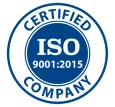
Digital Marketer is the most demanding course right now and Small to big companies hire digital marketers to increase their brand presence and boost their profits. Here are the top interview questions that will help you crack digital marketing interviews very easily with less effort. yes you heard it right in the article it have everything for everyone. We prepare the Digital Marketing Interview Question and Answer for Fresher, Experience,Technical and situation question.
Let’s get start with the question:
Digital Marketing Interview Question for Freshers
Digital marketing is the use of digital channels, such as search engines, social media, email, and websites, to promote products or services and connect with customers.
The main components include SEO (Search Engine Optimization), SEM (Search Engine Marketing), content marketing, social media marketing, email marketing, influencer marketing, affiliate marketing, and web analytics.
SEO (Search Engine Optimization) is the process of optimizing a website to rank higher on search engine results pages (SERPs). It’s important because higher rankings increase visibility, drive organic traffic, and enhance credibility.
A keyword is a word or phrase that users enter into search engines to find information. In SEO, keywords are used to optimize web content to improve search engine rankings.
SEM (Search Engine Marketing) is a form of internet marketing that involves promoting websites by increasing their visibility in search engine results pages through paid advertising, such as Google Ads.
Content marketing is a strategy focused on creating, publishing, and distributing valuable and relevant content to attract and engage a target audience, with the goal of driving profitable customer action.
PPC (Pay-Per-Click) advertising is a model of online advertising where advertisers pay a fee each time their ad is clicked. It’s commonly used in search engine advertising and social media platforms.
A landing page is a standalone web page created specifically for a marketing or advertising campaign, where visitors land after clicking on a link. It’s designed to prompt visitors to take a specific action, such as making a purchase or filling out a form.
Success can be measured using various metrics, including website traffic, conversion rates, click-through rates (CTR), engagement rates, return on investment (ROI), and customer acquisition cost (CAC).
Social media marketing involves using social media platforms to promote products, services, or brands, engage with audiences, and drive traffic to a website. It includes both organic activities and paid advertising.
Benefits include direct communication with customers, high ROI, ability to personalize messages, measurable results, and the potential to build strong customer relationship
Influencer marketing is a strategy where brands collaborate with influencers—individuals with a large and engaged following—to promote their products or services. Influencers can help increase brand awareness and credibility.
Affiliate marketing is a performance-based marketing strategy where a business rewards affiliates (partners) for driving traffic or sales to their website through the affiliate’s marketing efforts.
Web analytics involves collecting, analyzing, and reporting data about website activity and user behavior. Tools like Google Analytics help marketers understand how visitors interact with a website and measure the effectiveness of marketing efforts.
A CTA is a prompt that encourages website visitors to take a specific action, such as “Buy Now,” “Sign Up,” or “Learn More.” Effective CTAs are clear, compelling, and relevant to the audience.
A marketing funnel is a model that represents the customer journey from awareness to conversion. It typically includes stages such as awareness, interest, consideration, and purchase.
Optimization includes using a responsive design, improving page load speed, simplifying navigation, and ensuring that content is easily readable and accessible on mobile devices
Bounce rate is the percentage of visitors who leave a website after viewing only one page. A high bounce rate can indicate that a website isn’t engaging or relevant to its visitors
A/B testing is a method of comparing two versions of a webpage or ad to determine which one performs better. It involves changing one element (e.g., a headline or CTA) and measuring the impact on user behavior.
Organic search results are the unpaid listings that appear on a search engine results page based on their relevance to the search query, while paid search results are ads that businesses pay to display above or below the organic results
If you want to learn Digital Marketing Skill contact Digi Rathi Now
Digital Marketing Interview Question for Experience
Developing a comprehensive digital marketing strategy involves understanding your business goals, identifying your target audience, conducting a competitive analysis, choosing the right digital channels, setting measurable objectives, and creating a content plan. Additionally, integrating SEO, SEM, social media, email marketing, and analytics to track performance is crucial.
Important KPIs include conversion rate, customer acquisition cost (CAC), return on investment (ROI), click-through rate (CTR), bounce rate, and customer lifetime value (CLV). These metrics help in assessing the effectiveness and efficiency of your campaigns.
Staying updated involves regularly reading industry blogs, attending webinars and conferences, joining professional digital marketing groups, subscribing to newsletters, and following key influencers on social media. Continuous learning through online courses and certifications is also beneficial.
On-page SEO refers to optimizing elements within your website, such as content, meta tags, headings, internal links, and URL structure. Off-page SEO focuses on external factors, primarily link building, social media signals, and online reputation management, which help in improving your website’s authority and ranking.
Effective keyword research strategies include using tools like Google Keyword Planner, Ahrefs, and SEMrush to find relevant keywords, analyzing competitors’ keywords, understanding user intent, and considering long-tail keywords. Regularly updating and refining your keyword list based on performance data is also essential.
Website optimization involves ensuring fast load times, mobile-friendliness, using proper meta tags and descriptions, creating high-quality content, optimizing images and multimedia, improving site architecture, and building quality backlinks. Regularly auditing your site for SEO issues and fixing them is also critical.
Successful content marketing is built on understanding your audience’s needs, creating valuable and relevant content, maintaining consistency, leveraging various formats (blogs, videos, infographics), and promoting content across multiple channels. Measuring performance and adjusting strategies based on data is also key.
Effectiveness can be measured by metrics such as website traffic, engagement rates (likes, shares, comments), lead generation, conversion rates, time on page, and social media performance. Tools like Google Analytics, social media insights, and marketing automation platforms are used for tracking.
An effective social media strategy starts with defining clear objectives, understanding your target audience, selecting the right platforms, creating engaging and varied content, and setting a consistent posting schedule. Engaging with your audience, leveraging influencers, and using analytics to refine your approach are also important.
Advanced targeting options include Custom Audiences, Lookalike Audiences, detailed demographic targeting, behavioral targeting, interest targeting, and location targeting. Additionally, retargeting users based on their interactions with your website or app is a powerful tactic.
Best practices include segmenting your email list, personalizing content, creating compelling subject lines, using responsive design, ensuring clear call-to-actions, and A/B testing elements of your emails. Monitoring metrics such as open rates, click-through rates, and conversion rates is crucial for continuous improvement.
Increasing open rates can be achieved by crafting engaging subject lines, personalizing the sender’s name, optimizing send times, segmenting your audience for more relevant content, and ensuring your emails are not marked as spam. Regularly cleaning your email list to remove inactive subscribers also helps.
Google Analytics can be used to track website traffic, understand user behavior, measure conversion goals, analyze the performance of marketing campaigns, identify high-performing content, and gain insights into audience demographics and interests. These insights help in refining strategies and improving ROI
A/B testing is crucial for optimizing digital marketing efforts by comparing two versions of a webpage, email, or ad to determine which performs better. It helps in making data-driven decisions, improving user experience, and increasing conversion rates.
Strategies include thorough keyword research, creating relevant ad copy, using negative keywords, optimizing landing pages, setting appropriate bid strategies, and continuously monitoring and adjusting campaigns based on performance metrics. Utilizing ad extensions and A/B testing ads are also effective.
Budget allocation should be based on historical performance data, campaign goals, the target audience, and the cost-effectiveness of each channel. Regularly reviewing and adjusting budgets based on ROI, conversion rates, and overall campaign performance is essential.
AI can be used for personalized marketing, chatbots for customer service, predictive analytics, content creation, ad targeting, and automating routine tasks. AI helps in improving efficiency, gaining deeper insights, and delivering more personalized experiences to customers.
Voice search is increasingly important due to the rise of smart speakers and virtual assistants. To optimize for voice search, focus on natural language keywords, providing concise and direct answers to common questions, optimizing for local search, and ensuring your website is mobile-friendly and fast-loading.
Ethical considerations include respecting user privacy, being transparent about data collection practices, avoiding misleading or false advertising, providing truthful information, and ensuring accessibility. Adhering to regulations like GDPR and CCPA is also crucial.
Handling a digital marketing crisis involves having a crisis management plan, monitoring social media and online mentions, responding promptly and transparently, taking responsibility, and communicating with your audience effectively. Learning from the crisis and implementing measures to prevent future occurrences is also important.
Digital Marketing Technical Interview Question
Domain Authority (DA) is a metric developed by Moz that predicts how well a website will rank on search engine result pages (SERPs). It is measured on a scale from 1 to 100, with higher scores indicating a greater ability to rank. DA is calculated using multiple factors, including linking root domains and the total number of links
A 301 redirect is a permanent redirect that passes 90-99% of link equity (ranking power) to the redirected page. A 302 redirect is a temporary redirect and does not pass the same link equity, indicating to search engines that the redirect may change back.
Quality Score is a measure of the relevance and quality of your ads, keywords, and landing pages. Ad Rank determines the position of your ad on the SERPs and is calculated using your bid amount and Quality Score. Higher Quality Scores lead to better ad positions at lower costs.
SKAG stands for Single Keyword Ad Group, a PPC strategy where each ad group contains only one keyword (or very closely related variations). This approach allows for more precise targeting, higher Quality Scores, and improved control over bids and ad copy.
Performance can be tracked using metrics like engagement rate (likes, shares, comments), reach and impressions, click-through rate (CTR), conversions, and follower growth. Tools like Google Analytics, Facebook Insights, and Hootsuite Analytics can provide detailed performance data.
UTM parameters are tags added to a URL to track the effectiveness of online marketing campaigns across traffic sources and publishing media. They help in identifying which campaigns are driving traffic and conversions when analyzed in web analytics tools like Google Analytics.
The CAN-SPAM Act is a law that sets the rules for commercial email, establishes requirements for commercial messages, gives recipients the right to have emails stopped from being sent to them, and spells out tough penalties for violations. It’s important to ensure compliance and avoid legal issues.
High deliverability rates can be ensured by maintaining a clean email list, using double opt-in, personalizing emails, avoiding spammy words, ensuring proper email authentication (SPF, DKIM, DMARC), and regularly monitoring and removing inactive subscribers.
Bounce rate is the percentage of visitors who leave a site after viewing only one page. Exit rate is the percentage of visitors who leave the site from a specific page, regardless of how many pages they have viewed. Bounce rate measures single-page visits, while exit rate is specific to the final page viewed.
Goals in Google Analytics can be set up by navigating to the Admin panel, selecting the desired view, and then clicking on ‘Goals’. You can define goals based on various criteria such as destination, duration, pages/screens per session, or specific events. Conversions are tracked based on these goal completions.
Pillar content is comprehensive, authoritative content that serves as the cornerstone of your content marketing strategy. It covers a broad topic in-depth and is linked to from cluster content pieces. This structure helps improve SEO, establishes authority, and drives organic traffic
Content marketing improves SEO by producing high-quality, relevant content that attracts and engages users, incorporates targeted keywords, earns backlinks, and encourages social sharing. Regularly updating content and optimizing it for search engines helps maintain and improve rankings
Schema markup is a type of microdata that helps search engines understand the content on your website better, enhancing rich snippets in search results. This can improve your site’s visibility, click-through rates, and ultimately its rankings by providing more informative and attractive search results.
Duplicate content issues can be handled by using canonical tags to indicate the preferred version of a page, implementing 301 redirects for duplicate pages, using hreflang tags for international content, and ensuring consistent internal linking practices.
Key features include email marketing automation, lead scoring, CRM integration, segmentation, analytics and reporting, multi-channel campaign management, and personalized content delivery. Platforms like HubSpot, Marketo, and Pardot offer these features to streamline and enhance marketing efforts.
Google Tag Manager allows marketers to add and update website tags without modifying the code. It simplifies the process of managing tags for tracking and analytics, improves site speed by loading tags asynchronously, and provides a user-friendly interface for setting up triggers and variables.
Analyzing the customer journey involves using tools like Google Analytics to track user behavior, identifying drop-off points through funnel analysis, conducting user testing, and gathering feedback. Improving the journey may involve optimizing navigation, simplifying forms, enhancing content, and ensuring mobile-friendliness.
A/B testing compares two versions of a webpage, email, or ad to determine which performs better. It involves creating a hypothesis, developing variations, splitting the audience randomly, running the test for a sufficient period to gather data, and analyzing the results to make data-driven decisions.
AI is transforming digital marketing through personalized recommendations, predictive analytics, chatbots for customer service, automated content creation, enhanced targeting in ads, and real-time data analysis. AI helps in improving efficiency, personalization, and decision-making processes.
Voice search impacts SEO by prioritizing natural language queries and long-tail keywords. Marketers can prepare by optimizing content for conversational queries, focusing on local SEO, providing concise answers to common questions, and ensuring websites are mobile-friendly and fast-loading
Tip to Remeber before interview
Preparation
Understand the Company:
Research the company’s history, mission, values, and recent news.
Familiarize yourself with their products or services, target audience, and market position.
Review Job Description:
Understand the specific skills and experiences the role requires.
Prepare examples from your past work that demonstrate your proficiency in those areas.
Brush Up on Technical Skills:
Review key digital marketing tools (e.g., Google Analytics, Google Ads, SEO tools).
Be ready to discuss metrics, KPIs, and how you’ve used data to drive decisions.
Prepare Your Portfolio:
Collect examples of your past work (campaign reports, analytics snapshots, content samples).
Be prepared to explain your role in each project, the strategies used, and the results achieved
Practice
Mock Interviews:
Use a friend or a mentor to take turns assuming the role of the interviewer of an employer and asking mock interview questions.
Stay attentive on how you forward your ideas and ensuring you do it with as much confidence that you put into it as possible.
STAR Method:
This will involve using the STAR approach when answering self-organised behavioral questions that may be set in the exam.
This assists in providing clear and precise answers Learning Outcome This assignment was useful in attaining the following learning outcome: formulate cogent and precise answers to questions.





